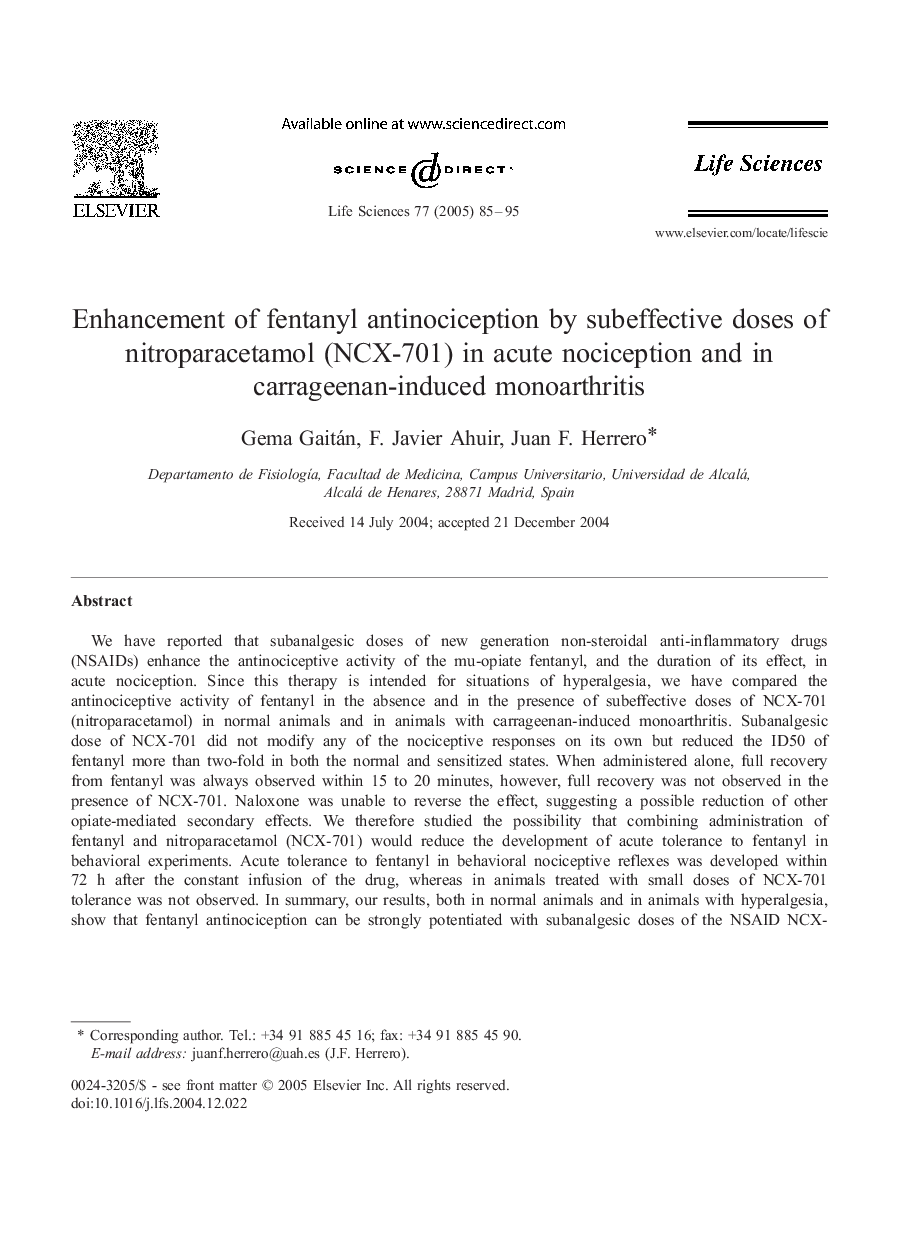| Article ID | Journal | Published Year | Pages | File Type |
|---|---|---|---|---|
| 9012911 | Life Sciences | 2005 | 11 Pages |
Abstract
We have reported that subanalgesic doses of new generation non-steroidal anti-inflammatory drugs (NSAIDs) enhance the antinociceptive activity of the mu-opiate fentanyl, and the duration of its effect, in acute nociception. Since this therapy is intended for situations of hyperalgesia, we have compared the antinociceptive activity of fentanyl in the absence and in the presence of subeffective doses of NCX-701 (nitroparacetamol) in normal animals and in animals with carrageenan-induced monoarthritis. Subanalgesic dose of NCX-701 did not modify any of the nociceptive responses on its own but reduced the ID50 of fentanyl more than two-fold in both the normal and sensitized states. When administered alone, full recovery from fentanyl was always observed within 15 to 20 minutes, however, full recovery was not observed in the presence of NCX-701. Naloxone was unable to reverse the effect, suggesting a possible reduction of other opiate-mediated secondary effects. We therefore studied the possibility that combining administration of fentanyl and nitroparacetamol (NCX-701) would reduce the development of acute tolerance to fentanyl in behavioral experiments. Acute tolerance to fentanyl in behavioral nociceptive reflexes was developed within 72 h after the constant infusion of the drug, whereas in animals treated with small doses of NCX-701 tolerance was not observed. In summary, our results, both in normal animals and in animals with hyperalgesia, show that fentanyl antinociception can be strongly potentiated with subanalgesic doses of the NSAID NCX-701 and that the development of acute tolerance to fentanyl in normal animals is prevented by this combination of drugs.
Related Topics
Health Sciences
Medicine and Dentistry
Cardiology and Cardiovascular Medicine
Authors
Gema Gaitán, F. Javier Ahuir, Juan F. Herrero,
